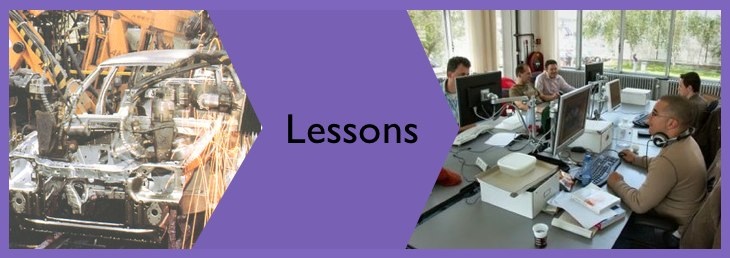What Else Can Software Development and Testing Learn from Manufacturing? Don't Forget Design of Experiments (DoE).

What Else Can Software Development and Testing Learn from Manufacturing? Don't Forget Design of Experiments (DoE).

Tony Baer from Ovum recently wrote a blog post titled: Software Development is like Manufacturing which included the following quotes.
"More recently, debate has emerged over yet another refinement of agile – Lean Development, which borrows many of the total quality improvement and continuous waste reduction principles of [lean manufacturing](http://www.lean.org/WhatsLean/. Lean is dedicated to elimination of waste, but not at all costs (like Six Sigma. Instead, it is about continuous improvement in quality, which will lead to waste reduction....
In essence, developing software is like making a durable good like a car, appliance, military transport, machine tool, or consumer electronics product.... you are building complex products that are expected to have a long service life, and which may require updates or repairs."
Here are my views: I see valid points on both sides of the debate. Rather than weigh general high-level pro's and cons, though, I would like to zero in on what I see as an important topic that is all-too-often missing from the debate. Specifically, Design of Experiments has been central to Six Sigma, Lean Manufacturing, the Toyota Production System, and Deming's quality improvement approaches, and is equally applicable to software development and testing, yet adoption of Design of Experiments methods in software design and testing remains low. This is unfortunate because significant benefits consistently result in both software development and software testing when Design of Experiments methods are properly implemented.
What are Design of Experiments Methods and Why are they Relevant?
In short, Design of Experiments methods are a proven approach to creating and managing experiments that alter variables intelligently between each test run in a structured way that allows the experimenter to learn as much as possible in as few experiments as possible. From wikipedia: “Design of experiments, or experimental design, (DoE) is the design of all information-gathering exercises where variation is present, whether under the full control of the experimenter or not. Often the experimenter is interested in the effect of some process or intervention (the “treatment”) on some objects (the “experimental units”).”
Design of Experiments methods are an important aspect of Lean Manufacturing, Six Sigma, the Toyota Production System, and other manufacturing-related quality improvement approaches/philosophies. Not only have Design of Experiments methods been very important to all of the above in manufacturing settings, they are also directly relevant to software development. By way of example, W. Edwards Deming, who was extremely influential in quality initiatives in manufacturing in Japan and the U.S. was an applied statistician. He and thousands of other highly respected quality executives in manufacturing, including Box, Juran and Taguchi (and even my dad), have regularly used Design of Experiments methods as a fundamental anchor of quality improvement and QA initiatives and yet relatively few people who write about software development seem to be aware of the existence of Design of Experiments methods.
What Benefits are Delivered in Software Development by Design of Experiments-based Tools?
Application Optimization applications, like Google’s Website Optimizer are a good example of Design of Experiments methods can deliver powerful benefits in the software development process. It allows users to easily vary multiple aspects of web pages (images, descriptions, colors, fonts, colors, logos, etc.) and capture the results of user actions to identify which combinations work the best. A recent YouTube multi-variate experiment (e.g., and experiment created using Design of Experiment methods) shows how they used the simple tool and increased sign-up rates by 15.7%. The experiment involved 1,024 variations.
What Benefits are Delivered in Software Testing by Design of Experiments-based Tools
In addition, software test design tools, like the Hexawise test design tool my company created, enable dramatically more efficient software testing by automatically varying different elements of use cases that are tested in order to achieve an optimal coverage. Users input the things in the application they want to test, push a button and, as in the Google Web Optimizer example, the tool uses DoE algorithms to identify how the tests should be run to maximize efficiency and thoroughness. A recent IEEE Computer article I contributed to, titled "Combinatorial Testing" shows, on average, over the course of 10 separate real-world projects, tsster productivity (measured in defects found per tester hour) more than doubled, as compared to the control groups which continued to use their standard manual methods of test case selection: [the broken link was removed]
Unfortunately, Design of Experiments methods – one of the most powerful methods in Lean Manufacturing, Six Sigma, and the Toyota Production System – are not yet widely adopted in the software development industry. This is unfortunate for two reasons, namely:
-
Design of Experiments methods will consistently deliver measurable benefits when implemented correctly, and
-
Sophisticated new tools designed with very straightforward user interfaces make it easier than ever for software developers and testers to begin using these helpful methods.


